Clancy Tucker's Blog, page 211
September 6, 2016
7 September 2016 - FACTS ABOUT STEVE JOBS

FACTS ABOUT STEVE JOBS
G'day folks,
I've posted this guy a few times, but I bet you didn't know these facts.
Steven Paul, better known as Steve Jobs, was an American pioneer of the personal computer revolution, and the creator of Apple Inc. Right from the 1970s when he began his innovative discoveries up until his death, he was known by the world, but only well-known by people closest to him. In 2011, after he died, Walter Isaacson, his official biographer, described him as the creative entrepreneur whose passion for perfection and ferocious drive revolutionized six industries which included personal computers, animated movies, music, phones, tablet computing, and digital publishing.
In twenty quick sentences, this article will tell you some other parts of Job’s life that were not entirely known to the public. They are facts that defined him, and made him unique and unforgettable at the same time.
1. Steve Jobs didn’t have a college degree. He didn’t even plan to go to college because he saw another path to success.
2. When Steve Jobs was CEO of Apple, he withdrew only one dollar annually from Apple’s accounts. However, he was getting compensation from his shares and reimbursements so he could still afford a lavish lifestyle.
3. Steve Jobs’ faith in alternative remedies cost him his life. On his dying bed he regretted not choosing natural and alternative medicines for curing his cancer.

4. Almost every early Mac computer produced by Apple had Steve Jobs’ signature engraved inside. Consumers would not see them without a special tool but would be proud of carrying Job’s signature all around.
5. Before Apple, Steve Jobs used to work for Atari. Atari company contributed to the electronic entertainment industry by making prominent arcade games, video game consoles and home computers.
6. Steve Jobs’ final words were “OH WOW. OH WOW. OH WOW.” His life was truly “WOW, WOW, WOW” – full of greatness, love and success. Or was he seeing something strange on his death-bed that marveled him?
7. George Lucas sold to Steve Jobs what would become Pixar. The deal was made in 1979 and cost 5 million dollars.
8. Steve Jobs was not a programmer; he never wrote a single line of programming code but his technical people convinced him that programming had to be object-oriented to produce a revolutionary effect.
9. Products made by Apple don’t have a direct off switch because Steve Jobs was afraid of death. He felt once something is “off”, you are gone.
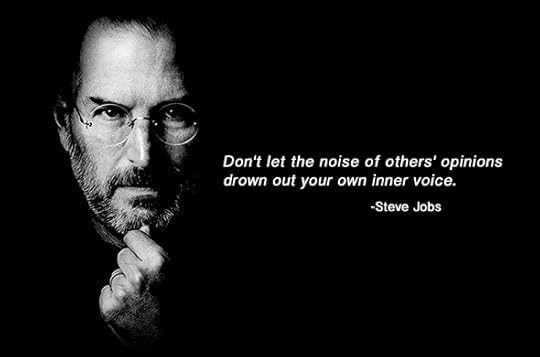
10. Steve Jobs’ final appearance at an Apple event was during the introduction of iOS 5 and iCloud. He delivered his final Apple speech on June 6, 2011.
11. Steve Jobs was the majority shareholder of Disney. 7,7% of the Disney common stock belonged to him.
12. Steve Jobs was diagnosed with dyslexia and had a GPA of 2.65. Doing simple tests for Jobs was harder than for any average healthy beginner.
13. Steve Jobs was biologically half Syrian Muslim. He was an adopted child and the name of his biological father was Abdulfattah Jandali. His real mother was an American and her name was Joanne Carole Schieble. The Father of Joanne warned her not to keep the baby and so she put up Steve for adoption.
14. Steve Jobs was a Zen Buddhist by religion. He used to go to India for meditations where he also learnt about simple ways of life.
15. Steve was a pescatarian. He ate fish but didn’t eat meat or any other protein.
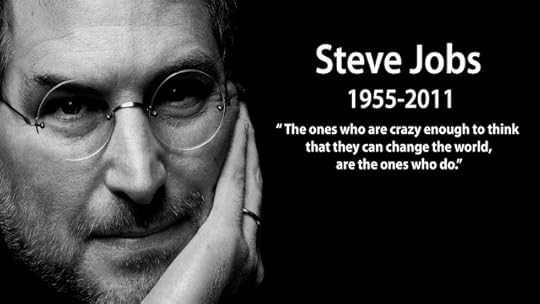
16 Steve Jobs said doing the drug, LSD was one of the most important things he ever did in his entire life. He was sure that LSD helped him to succeed in business.
17. Steve Jobs was killed by something sharing the same initials with what he invented – PC. He died from Pancreatic Cancer.
18. Steve claimed he was impotent and so denied his first daughter, Lisa. For a while Lisa was raised by her mother on welfare checks.
19. Older Apple laptops used to have the logo upside down. It was not a mistake, but on purpose to satisfy Apple users.
20. Steve Jobs didn’t want his products to be white. But when he was shown “the moon grey white color” by designer Jonathan Ive, he could not help but fall in love with the angelic colour.

Clancy's comment: I applaud his vision, self-belief and drive. Rest in peace, Steve.
I'm ...

[image error]
Published on September 06, 2016 14:15
September 5, 2016
6 September 2016 - EASILY CONFUSED WORDS
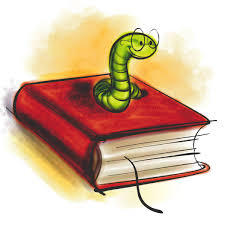
EASILY CONFUSED WORDS
G'day folks,
We all have certain words that make us stumble. Check out these regular problem words.
allusion / illusion
Allusion is a noun that means an indirect reference: “The speech made allusions to the final report.”
Illusion is a noun that means a misconception: “The policy is designed to give an illusion of reform.”
alternately / alternatively
Alternatively is an adverb that means on the other hand; one or the other: “You can choose a large bookcase or, alternatively, you can buy two small ones.”
amusement park / theme park
An amusement park, a noun, is a place where people go to have fun. It has games, food, rides, and shows for entertainment.
A theme park, a noun, is an amusement park with a theme, a subject that everything in the park has in common. The rides, games, and shows all deal with this subject in some way. At Disney World, a famous theme park, everything has some connection to the Disney characters.

beside / besides
Beside is a preposition that means next to: “Stand here beside me. ”
Besides is an adverb that means also: “Besides, I need to tell you about the new products my company offers.”
bimonthly / semimonthly
Bimonthly is an adjective that means every two months: “I brought the cake for the bimonthly office party.” Bimonthly is also a noun that means a publication issued every two months: “The bimonthly magazine will soon become a monthly publication.”
Semimonthly is an adjective that means happening twice a month: “We have semimonthly meetings on the 1st and the 15th.”
cite / site
Cite is a verb that means to quote as an authority or example: “I cited several eminent scholars in my study of water resources.” It also means to recognize formally: “The public official was cited for service to the city.” It can also mean to summon before a court of law: “Last year the company was cited for pollution violations.”
Site is a noun meaning location: “They chose a new site for the factory just outside town.”
cologne / perfume
Cologne, a noun, is a scented liquid made from alcohol and fragrant oils.Perfume, a noun, is a quickly evaporating scented oil either obtained from flowers or manmade. It is more concentrated (stronger) and much more expensive than cologne.
complement / compliment
Complement is a noun or verb that means something that completes or makes up a whole: “The red sweater is a perfect complement to the outfit.” Compliment is a noun or verb that means an expression of praise or admiration: “I received many compliments about my new outfit.”
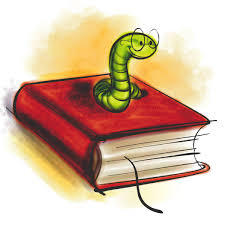
concurrent / consecutive
Concurrent is an adjective that means simultaneous or happening at the same time as something else: “The concurrent strikes of several unions crippled the economy.”
Consecutive means successive or following one after the other: “The union called three consecutive strikes in one year.”
connote / denote
Connote is a verb that means to imply or suggest: “The word ‘espionage’ connotes mystery and intrigue.”
Denote is a verb that means to indicate or refer to specifically: “The symbol for ‘pi’ denotes the number 3.14159.”
dinner / supper
Dinner, a noun, is always the main meal of the day, whether it is eaten at noon or in the evening.
Supper, a noun, is eaten only in the evening, whether it is a large or small meal.

Clancy's comment: Hope this has helped.
I'm ....


Published on September 05, 2016 14:44
September 4, 2016
5 September 2016 - STAN WAWRINKA

STAN WAWRINKA
G'day folks,
Welcome to the life of a professional tennis player. Stanislas "Stan" Wawrinka is a Swiss professional tennis player. He has reached two Grand Slam singles finals in his career, winning both: the 2014 Australian Open and the 2015 French Open, and has reached a world ranking of no.
Switzerland's Stan Wawrinka is an elite athlete who has won Olympic gold and multiple Grand Slam singles tennis titles.
“That moment of victory . . . it's like all the pressure is suddenly released. All the emotions come out together—but only the good emotions. You don’t realize what's happened. All you know is that you feel so good.”
—Stan Wawrinka

Synopsis
Born in Switzerland in 1985, Stan Wawrinka left school at age 15 to pursue his tennis career. Renowned for his one-handed backhand, Wawrinka teamed with Roger Federer to win gold in doubles at the 2008 Olympics, and in 2014 he beat several top players to claim the Australian Open championship.
Wawrinka captured his second Grand Slam title by defeating top seed Novak Djokovic in the 2015 French Open final.
Early Years
Stanislas "Stan" Wawrinka was born on March 28, 1985, in Lausanne, Switzerland, to parents Wolfram and Isabelle. The second of four tennis-playing siblings, he learned the sport at age 8 when he began practicing with coach Dimitri Zavialoff.
Wawrinka was competing in international junior tennis events by age 14, and at 15 he left school, continuing his education via distance learning while he played full time on the satellite circuit. In 2003 his efforts paid off when he became the junior French Open champion and was ranked 7th among juniors worldwide.

Professional Career
After turning professional in 2002, Wawrinka earned his first ATP Tour victory at the Croatian Open in 2006. He finished that year ranked in the Top 40 and continued his promising rise in 2007 with a fourth-round showing at the U.S. Open. In 2008, he teamed with Swiss superstar Roger Federer to win the gold medal in doubles at the Beijing Olympics, and he finished the year ranked 9th in the world.
The owner of a powerful one-handed backhand, Wawrinka at times displayed top-level ability against the sport's elite. He claimed his second ATP Tour title in 2010 with a victory at the Grand Prix Hassan II and reached the quarterfinals of the U.S. Open that year and the Australian Open in 2011.
However, Wawrinka's career truly took off after he joined forces in 2013 with coach Magnus Norman, a former top-seeded player. Wawrinka won his fourth title—his first in more than two years—at the Portugal Open, and later that summer he pushed top-seeded Novak Djokovic to the limit in a five-set semifinal loss at the U.S. Open.
In 2014 Wawrinka claimed his revenge against Djokovic with an epic quarterfinal win at the Australian Open and capped an impressive two-week run by knocking off the No. 1 ranked Rafael Nadal in the final to earn his first Grand Slam championship. It was the first time since 2009 that someone outside of the "Big 4" of men's tennis—Djokovic, Nadal, Federer and Andy Murray—had won a major singles title.

A deflating first-round loss at the French Open followed, but Wawrinka also scored a big victory by defeating Federer to win the Monte Carlo Masters, and he also reached the quarterfinals of both Wimbledon and the U.S. Open. He capped an all-around outstanding 2014 by helping Switzerland defeat France for the Davis Cup championship.
Wawrinka opened 2015 by advancing to the semifinals of the Australian Open, before suffering a tough loss to Djokovic. He failed to successfully defend his title at Monte Carlo, but a few weeks later he became the signature figure at the French Open. Drawing attention for his plaid shorts, Wawrinka scored a decisive straight-set victory over Federer in the quarterfinals, before knocking off his old foe, Djokovic, to win his second Grand Slam title.
Facing heightened expectations, Wawrinka was unable to match that success in subsequent majors, but he won a few smaller tournaments to build momentum in the early months of 2016. At the French Open, he battled back from a tough first-round match to advance to the semifinals, but saw his hopes of repeating as champion dashed when he fell to Murray in four sets.

Personal
Wawrinka resides in Saint-Barthélemy, close to his hometown of Lausanne. A tattoo on his left forearm features the words of Irish writer Samuel Beckett:"Ever tried. Ever failed. No matter. Try Again. Fail again. Fail better."In December 2009 Wawrinka married Swiss television personality Ilham Vuilloud, but they announced their separation in April 2015. They have one child, a daughter named Alexia, whose name and handprint are tattooed on Wawrinka's lower right torso.
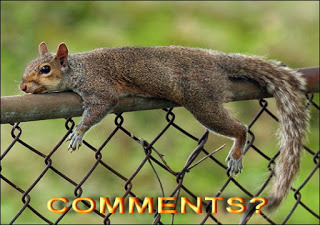
Clancy's comment: Go, Stan!
I'm ...
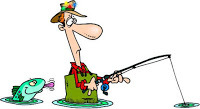

Published on September 04, 2016 14:54
September 3, 2016
4 September 2016 - ALL ABOUT BOOZE

ALL ABOUT BOOZE
G'day folks,
Welcome to some signs often seen outside bars and pubs around the world. Some of these might apply to you.
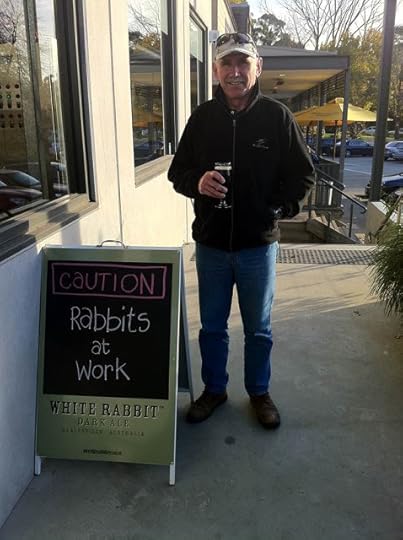








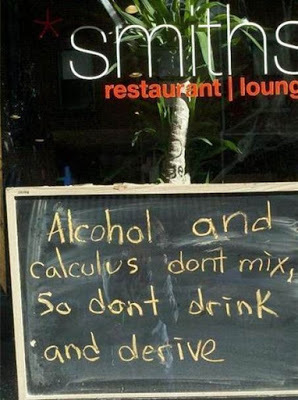




Clancy's comment: Any of these applicable to you?
I'm ...


Published on September 03, 2016 14:33
September 2, 2016
3 September 2016 - HOOVER DAM
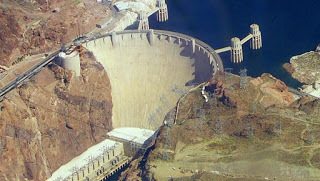
HOOVER DAM
G'day folks,
Hoover Dam, once known as Boulder Dam, is a concrete arch-gravity dam in the Black Canyon of the Colorado River, on the border between the U.S. states of Nevada and Arizona.
In the early 20th century, the U.S. Bureau of Reclamation devised plans for a massive dam on the Arizona-Nevada border to tame the Colorado River and provide water and hydroelectric power for the developing Southwest. Construction within the strict timeframe proved an immense challenge, as the crew bored into carbon monoxide-choked tunnels and dangled from heights of 800 feet to clear canyon walls. The largest dam in the world at the time of its completion in 1935, this National Historic Landmark stores enough water in Lake Mead to irrigate 2 million acres and serves as a popular tourist destination.
At the turn of the 20th century, farmers sought to divert the Colorado River to budding Southwestern communities via a series of canals. When the Colorado broke through the canals in 1905, creating the inland Salton Sea, the job of controlling the raging river fell to the U.S. Bureau of Reclamation.
Bureau director Arthur Powell Davis in 1922 outlined a plan before Congress for a multipurpose dam in Black Canyon, located on the Arizona-Nevada border. Named the Boulder Canyon project, after the original proposed site, the dam would not only control flooding and irrigation, it would generate and sell hydroelectric power to recoup its costs. Still, the proposed $165 price tag concerned some lawmakers, while representatives of six of the seven states in the river drainage area—Colorado, Wyoming, Utah, New Mexico, Arizona and Nevada —worried that the water would primarily go to California.

Secretary of Commerce Herbert Hoover brokered the 1922 Colorado River Compact to divide the water proportionally among the seven states, but the legal wrangling continued until outgoing President Calvin Coolidge authorized the Boulder Canyon Project in December 1928. In honor of the new president’s contributions, Secretary of the Interior Ray L. Wilbur announced the structure would be called Hoover Dam at a 1930 dedication ceremony, though the name didn’t become official until 1947.
As the Great Depression unfolded, hopeful laborers descended on Las Vegas and set up camp in the surrounding desert for the chance to work on the project. Those who were hired eventually moved to Boulder City, a community specifically built six miles from the work site to house its employees. Meanwhile, the U.S. government set about finding a contractor to build the proposed 60-story arch dam. The contract was awarded in March 1931 to Six Companies, a group of construction firms that had pooled its resources to meet the steep $5 million performance bond.
The first difficult step of construction involved blasting the canyon walls to create four diversion tunnels for the water. Facing strict time deadlines, workers toiled in 140-degree tunnels choked with carbon monoxide and dust, conditions that prompted a six-day strike in August 1931. When two of the tunnels were complete, the excavated rock was used to form a temporary coffer dam that successfully rechanneled the river’s path in November 1932.The second step of involved the clearing of the walls that would contain the dam. Suspended from heights of up to 800 feet above the canyon floor, high scalers wielded 44-pound jackhammers and metal poles to knock loose material, a treacherous task that resulted in casualties from falling workers, equipment and rocks.

Meanwhile, the dried riverbed allowed for construction to begin on the power plant, four intake towers and the dam itself. Cement was mixed onsite and hoisted across the canyon on one of five 20-ton cableways, a fresh bucket capable of reaching the crews below every 78 seconds. Offsetting the heat generated by cooling concrete, nearly 600 miles of pipe loops were embedded to circulate water through the poured blocks, with workers continually spraying the concrete to keep it moist.
As the dam rose, block by block, from the canyon floor, the visual renderings of architect Gordon Kaufmann took form. Electing to emphasize the imposing mass of the structure, Kaufmann kept the smooth, curved face free of adornment. The powerplant was given a futuristic touch with horizontal aluminum fins for windows, while its interior was designed to pay homage to Native American cultures.

With the body of water that would become Lake Mead already beginning to swell behind the dam, the final block of concrete was poured and topped off at 726 feet above the canyon floor in 1935. On September 30, a crowd of 20,000 people watched President Franklin Roosevelt commemorate the magnificent structure’s completion. Approximately 5 million barrels of cement and 45 million pounds of reinforcement steel had gone into what was then the tallest dam in the world, its 6.6 million tons of concrete enough to pave a road from San Francisco to New York City. Altogether, some 21,000 workers contributed to its construction.
Hoover Dam fulfilled the goal of disseminating the one-wild Colorado River through the parched Southwest landscape, fuelling the development of such major cities as Los Angeles, Las Vegas and Phoenix. Capable of irrigating 2 million acres, its 17 turbines generate enough electricity to power 1.3 million homes. The dam was designated a National Historic Landmark in 1985 and one of America’s Seven Modern Civil Engineering Wonders in 1994. It receives some 7 million visitors annually, while Lake Mead, the world’s largest reservoir, hosts another 10 million as a popular recreation area.

Clancy's comment: We have built massive things like this in Australia, but not for a while. Sadly, our politicians lack vision.
I'm ...
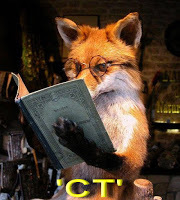

Published on September 02, 2016 16:26
September 1, 2016
2 September 2016 - P. G. WODEHOUSE

P.G. WODEHOUSE
G'day folks,
Sir Pelham Grenville Wodehouse, KBE was an English author and one of the most widely read humorists of the 20th century.
P.G. Wodehouse was one of the greatest comic writers of the Twentieth Century. He became a master of farce, creating a wonderful array of characters and imaginary fairyland based in the Edwardian British upper class. His 100 books have been translated into countless languages and remain an important part of popular culture.
Pelham Grenville Wodehouse was born on October 15th, 1881 at Guildford, England. He went to school at Dulwich college and spent his vacations often staying with various aunts around the English countryside. These childhood experience would later be wonderfully be built into his later novels.
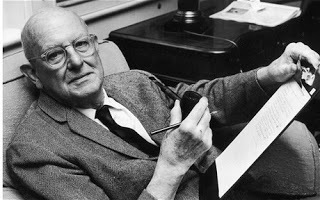
Initially he was set up for a career in banking. But, it soon became obvious that such a career was not for P.G. Wodehouse. He left to start a career as journalist and writer. His early stories were based on public school life, featuring the two great characters – Mike, the brilliant cricketer and all round good egg, and the alternative alter ego – psmith. Before, the First World War, he visited America which became a second home to him. It was during the 1920s, that the fame of P.G.Wodehouse really took off, with the publication of his Jeeves and Wooster stories.
They captured a golden age of innocence, and were also a gentle satire of his own class. The strength in the books lay in the marvelous comic talent he displayed in writing the various characters and dialogue. Each character seemed a humorous exaggeration of real life characters that we all know. He gained several acknowledgements for his literary efforts and was considered by Belloc to be the ‘greatest writer in English’.
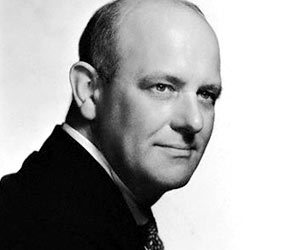
P.G. Wodehouse during the War
In 1940, he was captured by the Germans in Le Touquet and sent to an internment camp in Upper Silesia. As he was over 60, he was released, on the condition that he remain in Germany for the duration of the war. During this period, he was invited to make a broadcast on German Radio. Though he did not make statements supporting Germany or criticising his own country, his broadcasts attracted the strongest criticism, verging on the vitriol from countrymen who felt it appeared he was indifferent to the war and sympathetic to Germany.

P.G. Wodehouse later regretted his decision, which he blamed on a naivety, but, he denied he had intended to betray the interests of his country. Despite being the most popular writer, public opinion was so strongly against him, after the war he remained in US, and never returned to England, despite expressing a desire. He continued writing, reviving his Jeeves and Wooster stories. His success as a writer continued to grow and to his great delight was awarded a KBE shortly before his death on 14th February 1975 aged 93 – after over 70 years as a public writer.

Clancy's comment: Wow, 70 years as a public writer!
I'm ...


Published on September 01, 2016 14:37
August 31, 2016
1 September 2016 - TERRY PERSUN - Guest Author

TERRY PERSUN- Guest Author -
G'day folks,
Welcome to the life of another author from the USA. Terry Persun has been writing and publishing his poetry since the early 1970s. His work has appeared in many small and university magazines including Wisconsin Review, Kansas Quarterly, Riverrun, Rattle, Hiram Poetry Review, Drop Forge, Bluestem, NEBO, Eclipse, and many others.
Welcome, Terry ...
1. TELL US A LITTLE ABOUT YOURSELF AND YOUR WRITING JOURNEY.Like most authors this is probably a much longer story than would be interesting to listen to. The short version is that I loved reading as a child and decided early that that’s what I’d do. Of course relationships, kids, college, and jobs are all thrown in there as deterrents, but I continued to write through every one of those. Once I started getting published (in the late 1970s) the road got bumpier and bumpier—publishers folding, going bankrupt, changing their minds, etc. Eventually, I got to a point where I am published regularly (in fiction) and make my living writing (mostly nonfiction).
2. WHEN AND HOW DID YOU BECOME A WRITER?I’ve always been a writer. At least that’s how I see myself. Since that’s how I make my living, and since that’s what feeds my soul, I’m sticking with that story.
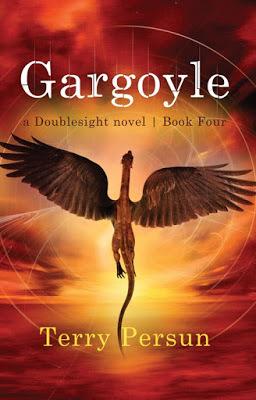
3. WHAT TYPE OF PREPARATION DO YOU DO FOR A MANUSCRIPT? DO YOU PLAN EVERYTHING FIRST OR JUST SHOOT FROM THE HIP?A combination of the two, these days. I’ve tried many methods over the years and will occasionally mix things up with something new, but most often I ponder an idea for quite some time, do some reading around the subject, maybe a bit of research, and then just start writing. I outline as I write in case I need to go back to something, but I seldom outline before I write.
4. WHAT DO YOU ENJOY MOST ABOUT BEING A WRITER?The actual writing, every day, for several hours, every morning. It’s the best part. When I write poems, though, it could be any time of day. Still love it.
5. WHAT IS THE HARDEST THING ABOUT BEING A WRITER?Rejection letters are not always easy, but typical if you write a lot as I do. Other than that, rewriting is difficult, but that doesn’t mean I don’t like it, just that it can be difficult.
6. WHAT WERE YOU IN A PAST LIFE, BEFORE YOU BECAME A WRITER?Well I’ve had several readings on that: rock star (who died fairly young), sailor (who drowned during a shipwreck); and hermit (who lived near a small lake, saw very few people, and died one winter when it got really cold and I couldn’t bring in enough wood).
7. WHAT IS YOUR GREATEST WRITING ACHIEVEMENT?That’s probably still to come, but if you mean so far, I suppose it’s my series “Doublesight”

8. WHAT ARE YOU WORKING ON AT THE MOMENT?I just finished a science fiction novel I’m tentatively calling “Biomass Rewind”. It’s a complicated novel about colonization of other worlds.
9. WHAT INSPIRES YOU?Everything.
10. WHAT GENRE DO YOU WRITE?I write in many genres and in many formats. Let’s see, I write poetry, short stories, novellas, novels, and nonfiction. I also write science fiction, fantasy, thriller, suspense, myster/crime, mainstream, magical realism, spiritual, and writing books.
11. DO YOU HAVE ANY TIPS FOR NEW WRITERS?Read, read, read; write, write, write; and learn the craft through books, classes, and anywhere else you can.
12. DO YOU SUFFER FROM WRITER’S BLOCK?I don’t believe in it.
13. DO YOU HAVE A PREFERRED WRITING SCHEDULE?For novels I write the first two or so hours every morning. For nonfiction articles and stuff, I write after writing fiction and throughout the day (depending on my workload). For poetry, I typically write in the evenings. These aren’t set in stone, but they’re pretty standard anymore.
14. DO YOU HAVE A FAVOURITE WRITING PLACE?In my office in front of my computer.
15. WHAT IS YOUR GREATEST JOY IN WRITING?The writing itself. It’s like a meditation. I feel free and alive.

16. WHO IS YOUR FAVOURITE AUTHOR AND WHY?I have so many. There are some fantastic authors writing today, but here goes: Priscilla Long (poetry) along with Ted Kooser and the late Jim Harrison and William Stafford. In general fiction, there is James Salter, Julian Barnes, E.L. Doctorow, and others. In science fiction, there’s Ben Bova and Robert Silverberg, and Bob Mayer. I could go on and on, as I said. But, the reason I like these writers is as varied as the works themselves. I enjoy great writing (which all portray), but also a good idea, a good story, or just beautiful sentences.
17. WHAT’S THE GREATEST COMPLIMENT YOU EVER RECEIVED FROM A READER?I had a reader email me one and said that he copied more quotes into his journal from one of my books than any other book he’d ever read. I thought that was pretty cool.
18. WHAT WAS THE WORST COMMENT FROM A READER?That they thought my writing was confusing. Of course, that could have been the reader, but it still hurt.
19. WRITERS ARE SOMETIMES INFLUENCED BY THINGS THAT HAPPEN IN THEIR OWN LIVES. ARE YOU?Absolutely. In fact, I don’t believe we can get away from incorporating pieces of ourselves in our writing. We can try to hide it, we can deny it, but it’s going to show up.
20. OTHER THAN WRITING, WHAT ELSE DO YOU LOVE?My family, hiking, long walks on the beach, a good meal, a good movie…I’m a fairly happy person and love being alive, so there are a lot of things I could say I love.
21. DID YOU HAVE YOUR BOOK / BOOKS PROFESSIONALLY EDITED BEFORE PUBLICATION?Always. That doesn’t mean mistakes don’t make it through. In fact, some books with multiple editors have had the most mistakes in them.
22. DESCRIBE YOUR PERFECT DAY.Get up and have coffee, write for several hours, have a light breakfast, make love, shower, take a hike, maybe work on a poem, answer some emails or check social media, go to the beach to watch the sunset, have a light but delicious dinner, and a good night’s sleep.
23. IF YOU WERE STUCK ON A DESERT ISLAND WITH ONE PERSON, WHO WOULD IT BE? WHY?My wife for obvious reasons: she’s my friend, lover, and partner. I can trust her and she can trust me. And I think we could have plenty to talk about while finding a way to survive.

24. WHAT WOULD YOU SAY IF YOU HAD THE CHANCE TO SPEAK TO WORLD LEADERS?Use a little common sense. Do the right thing no matter how it makes you look. Think about the people you serve and their needs.
25. WHAT ARE YOUR PLANS FOR THE FUTURE?Write and enjoy life in all its splendor.
26. WHAT ARE YOUR VIEWS ON BOOK TRAILERS? DO THEY SELL BOOKS?I don’t know, but suspect they help in some cases. I’m a firm believer that you do everything you’re capable of to gain visibility for your work. If that includes trailers and you’re able to do them (or can afford to have them done) then do that.
27. DO YOU SEE YOURSELF IN ANY OF YOUR CHARACTERS?Pieces of myself sometimes. Most times I’m so involved in the character themselves that I don’t always make the connection between me and them.
28. DOES THE PUBLISHING INDUSTRY FRUSTRATE YOU?Not really. Marketing can be frustrating. All I really want is my own audience, the one I’m supposed to have. So often they are not easy to find. I guess if I’m frustrated at all, it’s with the people who could be word-of-mouth advocates and have chosen not to be.
29. DID YOU EVER THINK OF QUITTING?Early on, yes. I tried once or twice, but always ended up buying another notebook to write in.
30. WHAT WAS YOUR FAVOURITE MANUSCRIPT TO WRITE? WHY?It’s almost impossible to pick a favorite, but when I read the question I quickly go to two novels: Revision 7:DNA and Sweet Song.
31. HOW WOULD YOU DEFINE ‘SUCCESS’ AS A WRITER. Being satisfied with what you’d written.
32. WHAT SHOULD READERS WALK AWAY FROM YOUR BOOKS KNOWING? HOW SHOULD THEY FEEL?Each book might be different. But I do tent to tackle the big questions: why are we here” How’d we get hear? What makes us tick? What’s love really worth? What if a robot thought he was on a higher level than humans? etc.
33. WOULD YOU LIKE TO HAVE YOUR BOOKS MADE INTO MOVIES? EVER WRITTEN A SCREENPLAY?I’d love for my books to go to screen. I have not written a screenplay.
34. HOW MUCH THOUGHT GOES INTO DESIGNING A BOOK COVER?If I’m doing it on my own, a lot (since I’m not an artist). Most often, I pay someone to produce a cover.
35. WHAT’S YOUR ULTIMATE DREAM?Win the Pulitzer prize in fiction and in poetry.
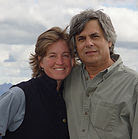
36. WRITING IS ONE THING. WHAT ABOUT MARKETING YOU, YOUR BOOKS AND YOUR BRAND? ANY THOUGHTS?Lots. I run my own marketing agency and realize how difficult it is to get in front of people. I also know that the best marketing for a book is a direct recommendation. Word of mouth is so important that I’d rather find one person who likes my work and is willing to talk about it versus a dozen who buy a copy and then never say a word.
37. ARE YOUR BOOKS SELF-PUBLISHED?Some are and some are not.
38. DESCRIBE YOURSELF IN FIVE WORDS.Interested, motivated, kind, responsible, and happy.
39. WHAT PISSES YOU OFF MOST?Not much. Maybe politics.
40. WHAT IS THE TITLE OF THE LAST BOOK YOU READ? GOOD ONE?I read several books at a time, but I suppose the last one I finished, which would be “The Drop” by Dennis Lehane.
41. WHAT WOULD BE THE VERY LAST SENTENCE YOU’D WRITE?Who knows? It might be in the middle of a novel or a poem.
42. WHAT WOULD MAKE YOU HAPPIER THAN YOU ARE NOW? CARE TO SHARE?A New York Times Bestseller, a Pulitzer, a National Book Award, something like that.
43. ANYTHING YOU’D LIKE TO ADD?
I think you’ve exhausted my output for the day…maybe a week. But thanks.

My author site: www.TerryPersun.com
Facebook page: https://www.facebook.com/TerryPersun
Twitter page: https://twitter.com/tpersun

Clancy's comment: Thanks, Terry. Good luck. I hope you crack it for the New York Times ... As we all do.
I'm ...


Published on August 31, 2016 14:50
August 30, 2016
31 August 2016 - CUTE & FUNNY ANIMALS
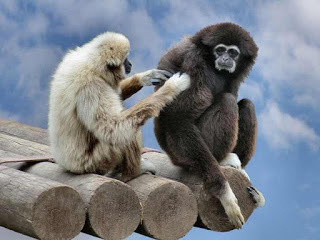
CUTE AND FUNNY ANIMALS
G'day folks,
I hope you enjoy some of these photographs.



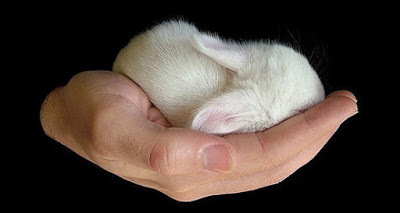




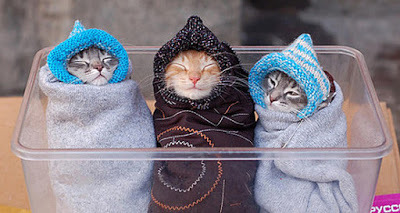
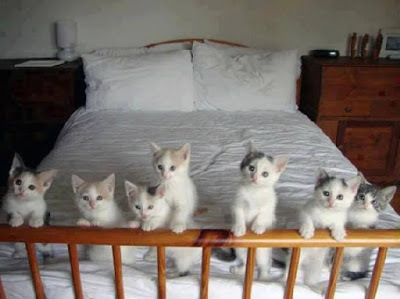



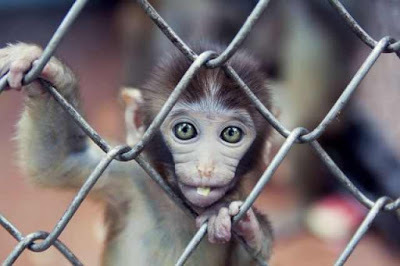

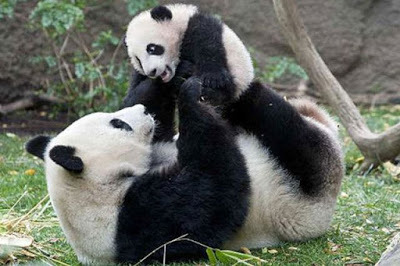



Clancy's comment: Cute, eh? The squirrels and monkeys win me over every time.
I'm ...

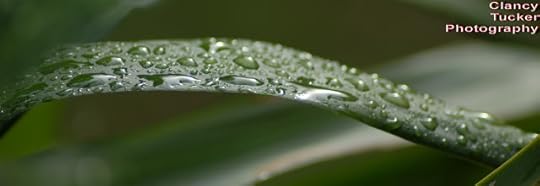
Published on August 30, 2016 15:15
August 29, 2016
30 August 2016 - WEIRD STUFF

WEIRD STUFF
G'day folks,
Time to check out some weird stuff.
















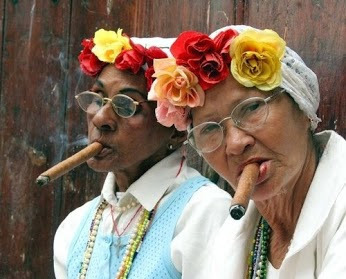

Clancy's comment: Mm ... I bet you picked up some great ideas, eh? I sure did.
I'm ...


Published on August 29, 2016 14:25
August 28, 2016
29 August 2016 - FREDERICK OLMSTED

FREDERICK OLMSTED
G'day folks,
Welcome to the life of an interesting character. Frederick Law Olmsted was an American landscape architect, journalist, social critic, and public administrator. He is popularly considered to be the father of American landscape architecture.
Today, the name of Frederick Law Olmsted is closely associated with Central Park. As a designer, he helped create the layout and look of the park; as superintendent, he taught visitors how to use the new space. But it took a series of fortunate events for Olmsted to end up working on Central Park, and for his plans for the spot to become reality. To celebrate his birthday, here are five facts regarding Olmsted and his instrumental involvement with the birth of Central Park.
A Man in Search of a Job
In the summer of 1857, 35-year-old Frederick Law Olmsted desperately needed money (the economy was in bad shape, he had been part of a failed publishing venture and he was in debt to family and friends). One day in August, while taking tea at an inn in Morris Cove, Connecticut, he happened to learn that the Central Park board, which was overseeing plans to build a park in the middle of New York City, was looking for a superintendent at a salary of $3,000/year. Olmsted quickly decided to apply for the position.
Olmsted's past experience — he'd been a farmer, yet had more recently worked in journalism and publishing — didn't make him a shoo-in as superintendent, but his application had other strengths. Powerful men in New York, including James Alexander Hamilton (son of Founding Father Alexander Hamilton) and writer Washington Irving, offered their support. And because Olmsted was a Republican who lacked strong political ties, he was acceptable to both Republicans and Democrats.
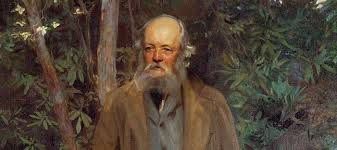
Olmsted was named as superintendent in September 1857 — but at a salary that was half what he'd initially expected. However, the pay cut didn't keep him from accepting the position. In a letter, he admitted to his brother, "On the whole, as the times are, I shall think myself fortunate if I can earn $1500."
Beginning of a Beautiful Partnership
As superintendent, Olmsted oversaw the draining and clearing necessary to transform a swampy and rocky 770-acre site into more manageable land. He did his job well, but it had nothing to do with park design. In fact, Olmsted only began to consider designing Central Park thanks to architect Calvert Vaux.
Vaux convinced the park board to hold a design competition, then asked Olmsted to collaborate with him on a submission. This invitation wasn't because Vaux had somehow discerned what would turn out to be Olmsted's prodigious talent for landscape design — instead, Vaux knew that as superintendent, Olmsted would have a wealth of topographical information to offer (the topographical map that design contestants were supposed to work with was reportedly inaccurate).
Olmsted's supervisor, Egbert Viele, had submitted a design, so Olmsted was hesitant about entering the competition. But when he broached the subject with his supervisor, Viele made it clear that he wasn't worried about Olmsted; Olmsted therefore agreed to partner with Vaux.

The Best Design
Because they both had day jobs — Olmsted as park superintendent, Vaux at his architectural firm — the pair had to collaborate at night and on weekends. The competition's closing date was April 1, 1858, and they worked up until the very last minute; in fact, their submission, which was called Greensward, was handed in after the deadline (but fortunately still accepted).
Greensward offered winding paths and groves of trees intended to make the rectangular Central Park site more enticing. It also contained an ingenious solution for traffic that needed to cross the park: sunken roadways that would leave parkgoers undisturbed. The 33 designs in the competition were of varying interest and quality — one plan wanted meadows shaped in the form of the world's continents, while another submission was nothing more than a drawing of a pyramid — but Greensward was in a class by itself. It won first prize.
Vaux and Olmsted had fully partnered on the design. However, it was Olmsted who was named architect-in-chief of Central Park in May 1858 — though it was Vaux, not Olmsted, who was the actual architect. Olmsted got the promotion as he was already in place as superintendent, and would be the one to supervise most of the work in the park. Vaux was given the title of Olmsted's assistant.

The design win and the position of architect-in-chief didn't mean that Olmsted and Greensward had a smooth path ahead. Soon two wealthy and powerful commissioners on the Central Park board — Robert Dillon and August Belmont — came up with a few design "improvements." One called for the creation of a straight promenade, Cathedral Avenue, that would run almost the entire length of the park.
Cathedral Avenue upended Olmsted and Vaux's design, as the long tree-lined street would destroy their vision of a separate green oasis in the city (which was a desperate need — at the time, poorer citizens had to visit cemeteries when they wanted recreational space). But Dillon and Belmont were accustomed to getting what they wanted. They took out advertisements in favor of their changes, which began to receive positive attention.
Fortunately, Olmsted still had connections to New York City's newsmen, and showed some of them how the proposed alterations would destroy his design. The writers and editors who were convinced voiced their support in print; one wrote about Greensward, "It is not only so beautiful in its grand outlines and its details, but so complete, symmetrical, and consistent with itself, that it can hardly be changed in any essential point." Though there would be smaller alterations, the tide of public attention turned, and overall the Olmsted/Vaux plan was safe.

A Park for All the People
From the moment Central Park first opened for ice skating on December 11, 1858, it was a hit with the public. And while Olmsted was glad that people liked the park, he also wanted park visitors to follow some guidelines. He'd once noted, "A large part of the people of New York are ignorant of a park.... They will need to be trained in the proper use of it and be restrained in the abuse of it."
To accomplish this, Olmsted posted hundreds of signs for visitors (forbidding actions such as throwing stones, annoying birds and picking flowers or leaves). He also assembled a force of park keepers. These keepers were taught to interact respectfully with the public, while still enforcing park rules; to make it expressly clear that they were not part of the regular city police force, they sported gray uniforms instead of blue.
Under Olmsted's guiding hand, Central Park succeeded in becoming a locale where all members of society were welcome. As he'd wanted, it offered "healthful recreation for the poor and the rich, the young and the old, the vicious and the virtuous." And if he were to see his park today, Olmsted would find that it's still a beloved spot where New Yorkers and visitors alike can enjoy themselves.

Clancy's comment: One of the most interesting park's I've ever visited, and a great place to observe people and take photographs.
I'm ...


Published on August 28, 2016 14:52



